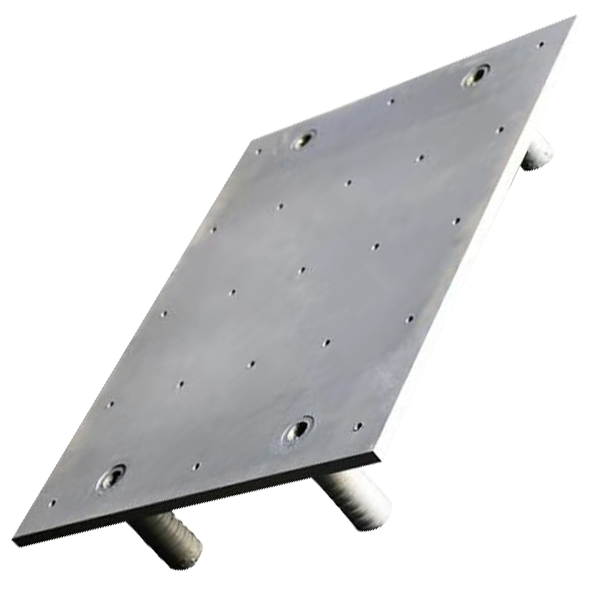The embedded steel plate of the support is a key force-transmitting component in bridge engineering,
As a steel embedded parts manufacturer, the production of bearing embedded steel plates must be carried out strictly in accordance with design specifications and construction requirements. The following is a detailed manufacturing process and key control points:
Material Preparation
Steel plate material selection: Generally, Q235B or Q345B carbon structural steel is used (depending on design requirements). Material certificates must be provided to ensure that tensile strength, yield point, elongation, etc. comply with the standards of GB/T 700 or GB/T 1591.
Anchor bar / stud material: HRB400 grade steel bars or studs with good welding performance (such as those in accordance with GB/T 10433 standard) shall be selected, and they shall be compatible for welding with steel plates.
2. Material cutting and blanking
Steel plate cutting: Use CNC flame cutting machines or laser cutting machines to cut materials according to the dimensions on the drawings, ensuring that the length, width, and diagonal tolerances are within ±2mm.
Bevel processing: If bevels for welding (such as K-shaped or V-shaped) are required, they should be processed by a beveling machine or planer to ensure full penetration of the weld.
Rebar cutting for anchor bars: The steel bars are cut to the designed length and the ends are ground smooth for welding.
3. Welding Processing
Welding procedure qualification: Conduct procedure qualification in accordance with JGJ 18 or AWS D1.1 standards to determine parameters such as current, voltage, and speed.
Anchor bar welding: Method: Arc welding (manual welding or CO₂ gas shielded welding) or submerged arc welding is adopted.
Quality requirements: The welds should be full and free of slag and pores, with a weld toe height of ≥ 6mm (as per design), and the deviation of the anchor bar center position should be ≤ 5mm.
Stud welding: Use a dedicated stud welding machine to ensure the pull-out force meets the standard.
Deformation control: Symmetrical segmented welding or fixture fixation should be adopted to prevent the steel plate from warping. After welding, let it cool naturally.
4. Drilling and Surface Treatment
Drilling: Use a CNC drilling machine to process bolt holes or grouting holes. The hole diameter deviation is ±0.5mm, and the hole spacing deviation is ±1mm.
Rust removal and anti-corrosion: Sandblasting or shot blasting for rust removal to Sa2.5 grade (GB/T 8923). Apply epoxy zinc-rich primer (50μm) + epoxy mica intermediate paint (optional) + polyurethane topcoat (optional), or hot-dip galvanizing (zinc coating ≥ 80μm).
5. Quality Inspection
Dimension inspection: Use calipers and tape measures to check the dimensions of steel plates, hole positions, and the spacing of anchor bars.
Welding inspection: Visually inspect the appearance of the weld seam. Ultrasonic testing (UT) or magnetic particle testing (MT) shall be conducted if necessary.
Anti-corrosion inspection: Check the paint film thickness with a coating thickness gauge and test the adhesion by the cross-cut method.
6. Marking and Packaging
Marking: Steel stamping or spraying of the serial number, specification, and production batch for easy traceability.
Packaging: Rust-proof paper + wooden box/steel frame for fixation to prevent collision during transportation.
Through the above process, our factory can ensure the load-bearing capacity, durability and construction compatibility of the embedded steel plates for the supports. If there are special requirements (such as seismic design, stainless steel material), the process and inspection standards need to be adjusted.

